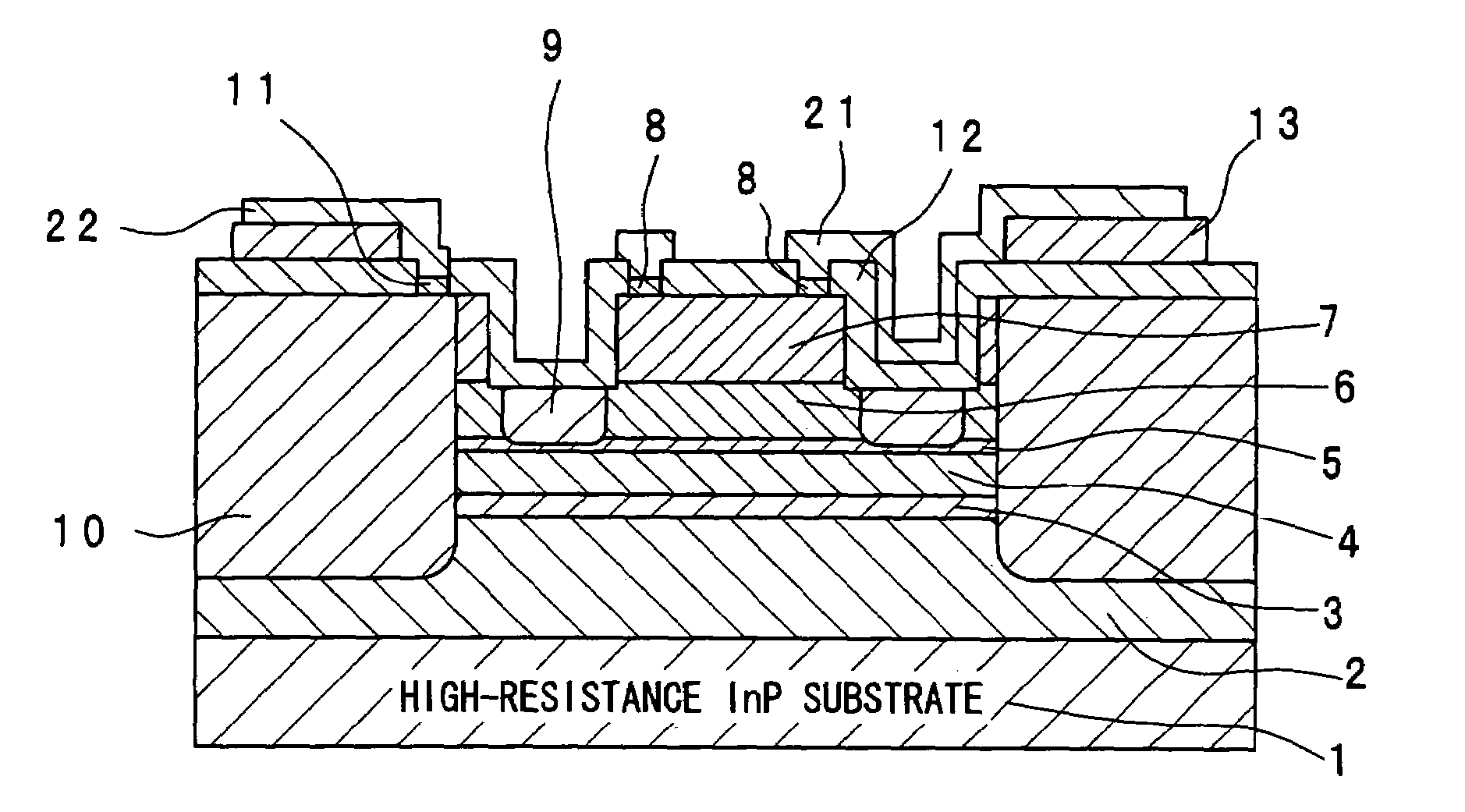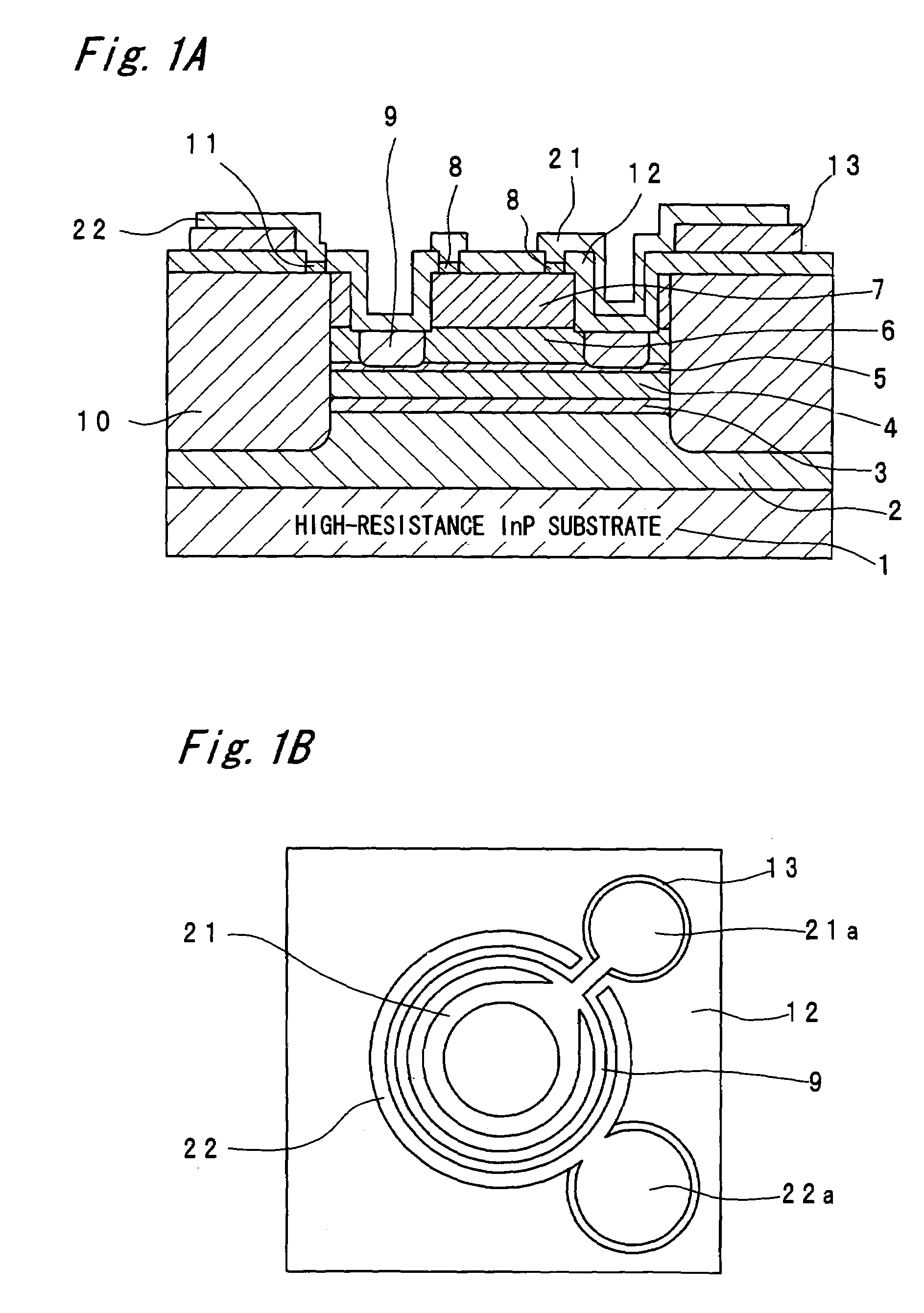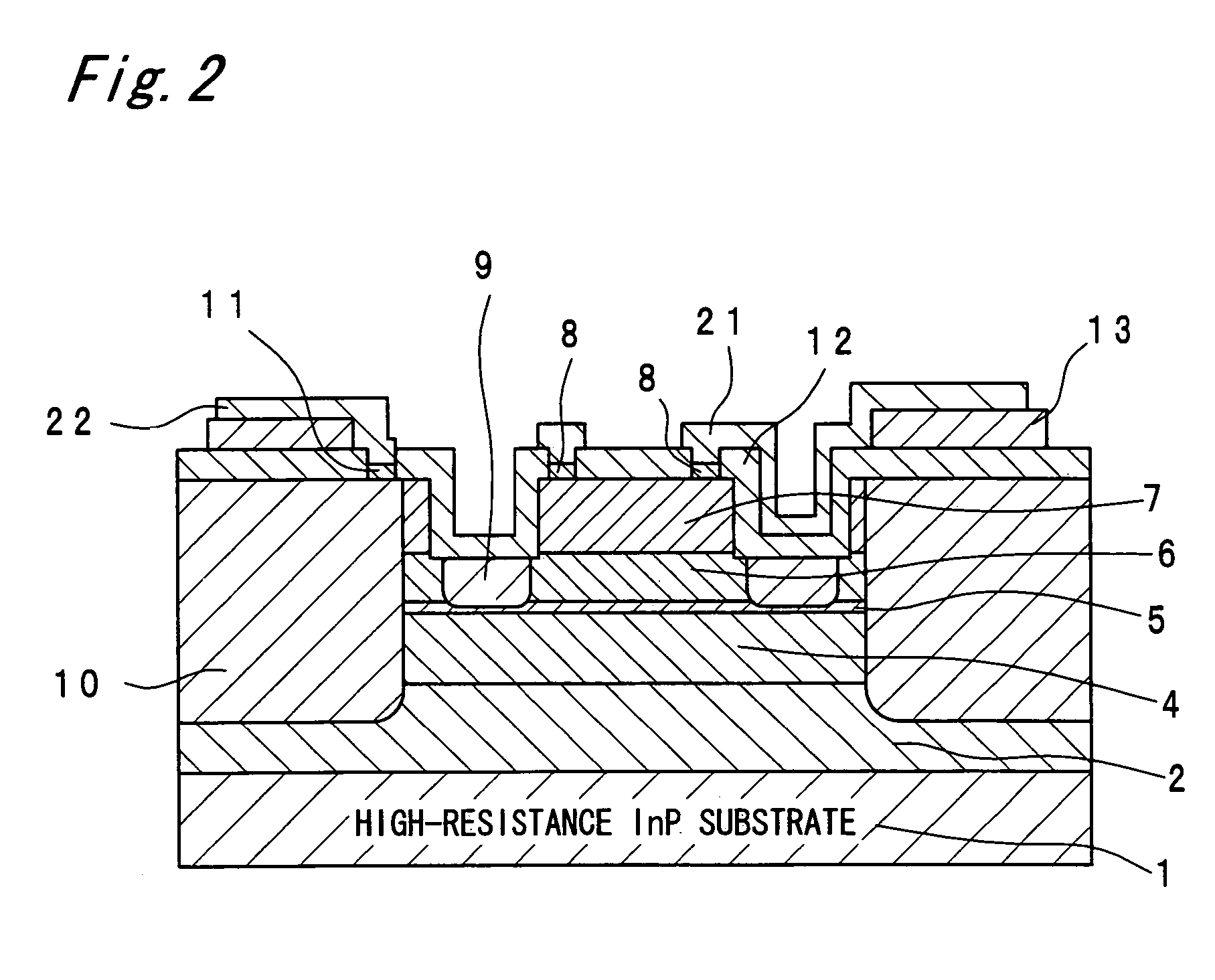Avalanche photodiode
a photodiode and avalanche technology, applied in the field of avalanche photodiodes, can solve the problems of sacrificing sensitivity characteristics, noise characteristics and high-speed response characteristics, and deterioration of noise characteristics, so as to reduce working voltage, reduce noise characteristics, and reduce the effect of sensitivity
- Summary
- Abstract
- Description
- Claims
- Application Information
AI Technical Summary
Benefits of technology
Problems solved by technology
Method used
Image
Examples
embodiment 1
[0029]First, a specific structure of an avalanche photodiode in an embodiment 1 will be clarified by way of brief explanations of a process of producing the avalanche photodiode of the embodiment 1 according to the present invention.
[0030]The avalanche photodiode of the embodiment 1 is a plane light-receiving type separated absorption and multiplication avalanche photodiode (SAM-APD (Separated absorption and Multiplication-Avalanche Photo Diode)).
[0031]First, a p-type InP buffer layer 2 (Be: 5×1018 cm−3), a p-type InGaAs multiplication suppressing layer 3 (Be: 5×1017 cm−3), an i-type InGaAs light-absorbing layer 4, a p-type InP field limiting layer 5 (Be: 4.5×1017 cm−3), an i-type AlInAs multiplication layer 6, an i-type InP etching stopper layer (not shown), an n-type AlInAs cap layer 7 (Si: 5×1018 cm−3) and an n-type InGaAs contact layer 8 (Si: 5×1018 cm−3) are formed one by one by epitaxial growth. As a crystal growth method, a solid source or gas source MBE method, metalorganic ...
embodiment 2
[0064]FIG. 9 is a sectional view showing the elemental structure of an avalanche photodiode having a multiplication layer comprising i-type InP.
[0065]A process of producing the avalanche photodiode of the embodiment 2 will be briefly explained to clarify the structure of the avalanche photodiode of the embodiment 2.
[0066]In this method, first an n-type InGaAs multiplication suppressing layer 103 (Si: 1×1018 cm−3), an i-type InGaAs light-absorbing layer 104, an i-type InGaAsP layer 105, an i-type InP multiplication layer 106 and an i-type InGaAs contact layer 107 are respectively formed one by one on an n-type InP substrate 101 by epitaxial growth (impurities to be added to the crystal and the concentration of the impurities are shown in the above parenthesis). As the crystal growth method, solid source or gas source MBE, metalorganic chemical vapor deposition (MOCVD) method or the like is preferably used.
[0067]Next, the cyclic groove region is implanted with Be ions, followed by hea...
embodiment 3
[0075]In the embodiments 1 and 2, the structure in which light is incident from the upper surface of the element is described by way of explaining the process of producing the element. A semiconductor light-receiving element generically called a waveguide type avalanche photodiode in which light is incident from the element side (cleavage plane side) as shown in FIG. 10 can be expected to be improved in the ratio of ionization rates by inserting the InGaAs multiplication suppressing layer 203.
[0076]The avalanche photodiode of the embodiment 3 is produced in the following manner.
[0077]First, a p-type InGaAs conductive layer 201, a p-type InP layer 202, a p-type InGaAsP light-confining layer 211, a p-type InGaAs multiplication suppressing layer 203, an i-type InGaAs light-absorbing layer 204, a p-type InGaAsP field limiting layer 205, an i-type AlInAs multiplication layer 206, an n-type InP layer 207 and an n-type InGaAs contact layer 208 are respectively formed by epitaxial growth on...
PUM
 Login to View More
Login to View More Abstract
Description
Claims
Application Information
 Login to View More
Login to View More - R&D
- Intellectual Property
- Life Sciences
- Materials
- Tech Scout
- Unparalleled Data Quality
- Higher Quality Content
- 60% Fewer Hallucinations
Browse by: Latest US Patents, China's latest patents, Technical Efficacy Thesaurus, Application Domain, Technology Topic, Popular Technical Reports.
© 2025 PatSnap. All rights reserved.Legal|Privacy policy|Modern Slavery Act Transparency Statement|Sitemap|About US| Contact US: help@patsnap.com



